How the ISTAR military system works in Ukraine
The eye is the lamp of the body. If your eyes are healthy, your whole body will be full of light. But if your eyes are unhealthy, your whole body will be full of darkness [Matthew 6:22-23]
The challenge of information overload is familiar to everybody - an endless stream of content and news that obscures what truly matters. A similar issue arises in modern warfare. In the past, militaries had to operate with scarce intelligence about enemies positioned even kilometres away.
Nowadays, drones, advanced communication systems, radars and satellites flood headquarters with vast amounts of data. This deluge of data presents a new challenge: what to do with it? A small team at headquarters must analyse terabytes of intelligence about the enemy within hours.
It is difficult not to go crazy in the process, because the data obtained may be false or useless. In modern warfare, militaries have two options: either to tame information flows and become more effective or to drown in a sea of Excel spreadsheets, screenshots, labels and decryptions.
Advertisement:To pursue the first path, Ukrainian commanders across various fronts began setting up specialised units designed to collect and analyse all battlefield data using cutting-edge technology. Such units are called ISTAR centres, a practice that has been adopted by NATO countries.
In the 13th Khartiia Brigade, ISTAR centre operators work around the clock, monitoring multiple drone feeds and staying in constant contact with troops on the battlefield. They log everything they hear and see: the routes Russian forces are using, what kind of equipment is located nearby, and the frequencies on which drones operate. Analysts then piece this data together to provide headquarters with a comprehensive picture of the battlefield.
Suppose they need to respond to Russian movements immediately. In that case, operators can call in First-Person View (FPV) drones or artillery in minutes and watch in real-time as the Russians are obliterated. Not all units have a fully operational ISTAR system yet.
However, its implementation is a real opportunity for Ukraine to boost battlefield efficiency, deliver more blows to Russian forces with fewer resources, and protect the lives of its soldiers.
The price of information
Any modern military needs a network of units gathering and analysing information from the battlefield. While this seems obvious today, it wasn't always so clear. "Armies used to fight by sending infantry against infantry and tanks against tanks.
Everything hinged on numbers, but things changed with the advent of modern communications and intelligence technologies. It was only after suffering a defeat in Vietnam that the Americans started considering a unified network to collect and process battlefield information, finalising its principles only after the arrival of GPS technology. A striking example of ISTAR in action was during the Iraq War, when 250,000 Americans took out 1.4 million Iraqi troops in 21 days.
The operation went like clockwork. The US used its technical superiority to the full, having all the information needed about the enemy. After that, its allies began to adopt this approach.
Ukraine lagged behind the Western world for decades, but now it's catching up as it has no other choice," Yaroslav Honchar, co-founder of Aerorozvidka (Aerial Intelligence), a non-governmental organisation that helps develop ISTAR in the Ukrainian Armed Forces, told EP. An increasing number of units in Ukraine's defence forces are independently studying NATO standards and setting up ISTAR systems at their headquarters. One of them is the 13th Khartiia Brigade of the NGU, which operates on the Kharkiv front.
Founded in 2022 as a small volunteer unit of just a few dozen people, in two years it has grown into a full brigade with thousands of soldiers.
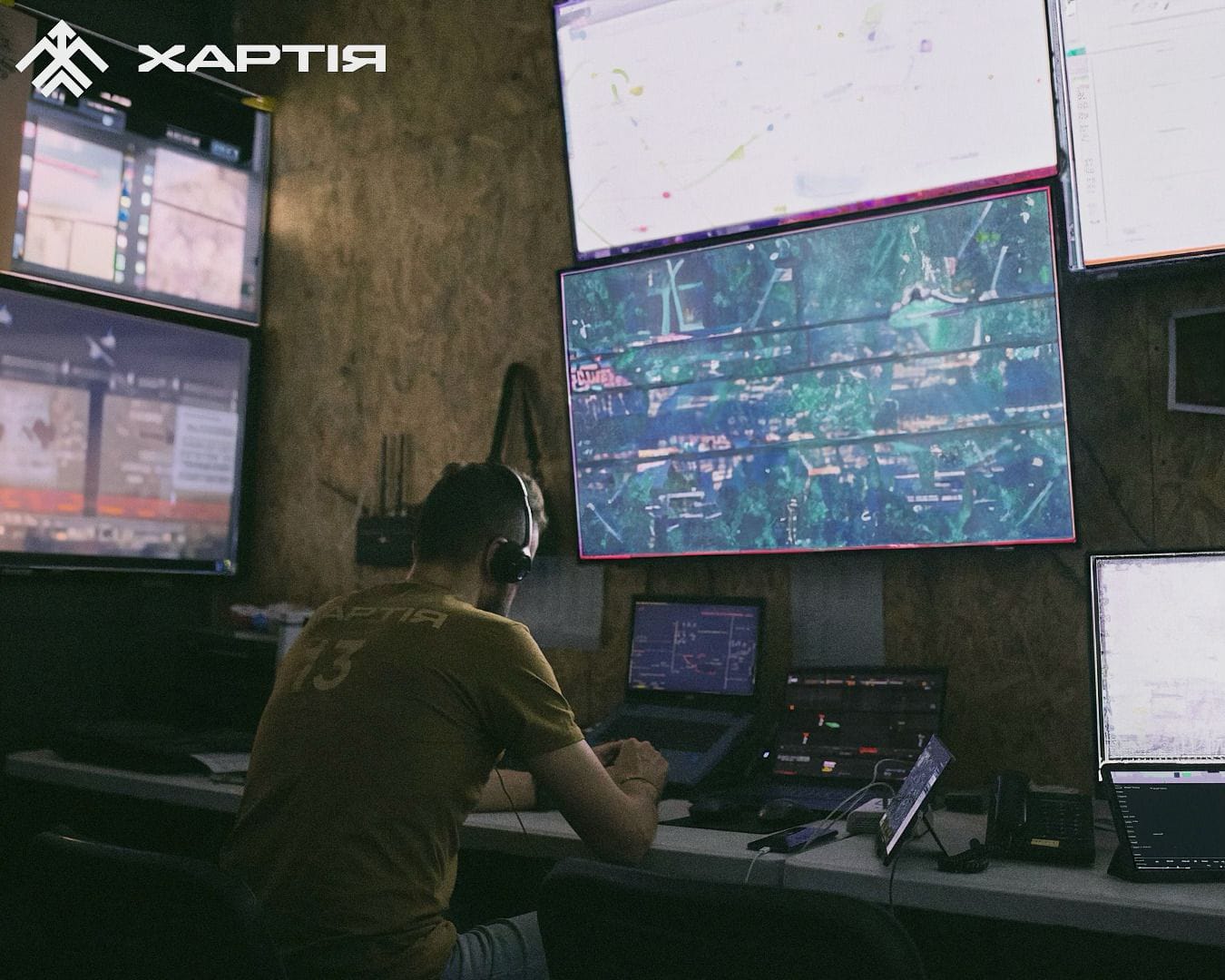 An ISTAR operatorPhoto: Khartiia Brigade
An ISTAR operatorPhoto: Khartiia Brigade
"Our brigade's principle is that infantry should not engage in combat. If the infantry starts shooting, it means we've done something wrong. Our goal is to deliver pre-emptive strikes, keep the enemy on edge, stop them from massing, and mine their movement routes.
For this, we need to know exactly what's happening around us," a soldier, who goes by the alias Bit, from Khartiia's headquarters told Ekonomichna Pravda. The newly introduced ISTAR system helps the brigade create a comprehensive picture of the battlefield. ISTAR stands for Intelligence, Surveillance, Target Acquisition, and Reconnaissance.
But what does this mean in practice? First, the military deploys dozens of technological resources to collect intelligence. These consist, for example, of reconnaissance drones that take turns monitoring a specific area and recording Russian troop movements, a sniper observing a cluster of vehicles through a thermal imager, and electronic intelligence systems, radars, satellites and cameras.
Surveillance priorities are set by the unit commander.
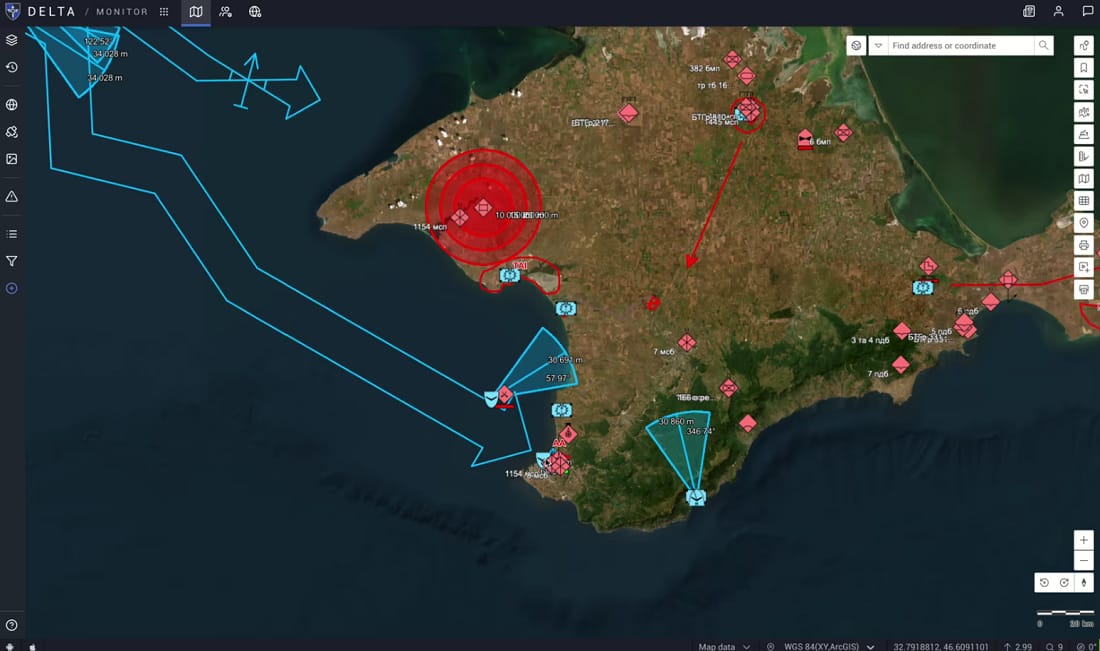 Delta systemPhoto: Innovation Centre of Ukraine's Defence Ministry
Delta systemPhoto: Innovation Centre of Ukraine's Defence Ministry
The military inputs the coordinates of Russian forces into the Delta system, a digital map that updates in real-time and records the history of changes. If a soldier is unable to enter the data personally, an ISTAR operator - who remains in constant communication and monitors drone feeds and other sources - will do it for them.
Ukrainian troops have automated tools for marking targets in the Delta system. For instance, a special counter-battery radar can quickly determine the location from which a Russian munition was fired and place the coordinates on the map within seconds.
Delta also incorporates radio intercepts, information from chatbots and open sources, and reports from intelligence agents.
This results in a massive volume of data being marked on the map, making it nearly impossible to understand. At this stage, analysts step in. Their role is to extract meaning from the collected information, identify patterns, visualise them, and quickly relay the findings to the unit's headquarters.
There, commanders use this analysis to determine how best to disrupt Russia's plans. "Recently, our ISTAR team gathered aggregate data showing how the Russians have been moving along this road for several days," Bit notes, showing a graph on his laptop. "The guys discovered that the Russians regularly march several kilometres on foot to rotate here.
We draw conclusions from this and use the information against them. We also track the most frequent times when they rotate, then send out FPV drones to target them in advance. Additionally, we monitor their artillery patterns to identify the safest windows for planning our actions.
There are many such examples," he explains. Bit says the goal of their ISTAR unit is now to gather even more critical information that can be valuable in combat. For instance, analysts track the effectiveness of drones.
If the equipment is not delivering the desired results, the command assesses how to address the issue. Ultimately, managing a brigade becomes similar to managing a large business, where the success of operations depends on the availability of information and on drawing the correct conclusions from it. Even the tools used are similar: Khartiia's headquarters use a well-known programme designed for business analytics.
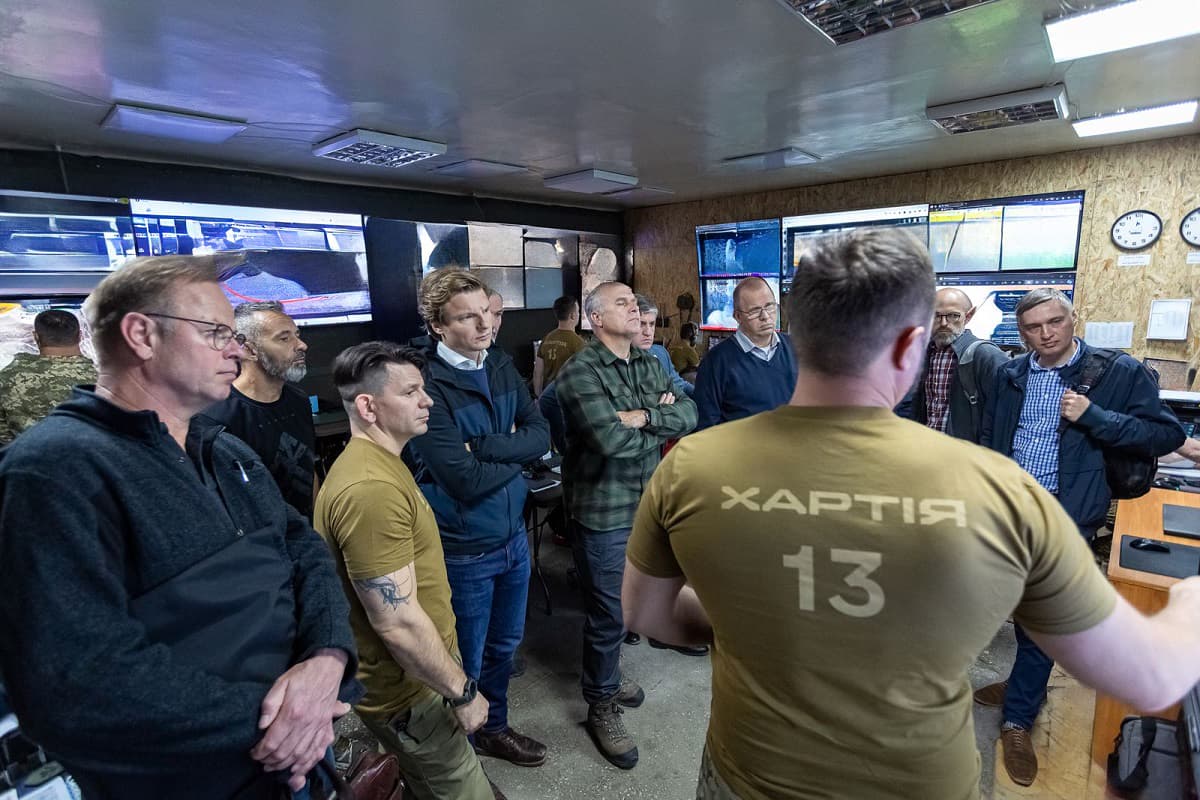 The commander of Khartiia Brigade shows the data analysis system to the Dutch defence ministerPhoto: Khartiia
The commander of Khartiia Brigade shows the data analysis system to the Dutch defence ministerPhoto: Khartiia
ISTAR centres can operate at various levels of command: battalion, brigade, or operational and tactical groups.
Each level has its own degree of autonomy, area of responsibility, and priorities. Ideally, the centres should communicate with each other, coordinate actions, share data from their sources and use their own means to help deliver strikes on the Russians. That being said, each unit can technically build its ISTAR system differently.
The most proactive brigades even develop their own analytical software. "ISTAR is like a religion. There's one Bible, but everyone interprets it in their own way," explains Bit. The NATO document AJP-2.7 can be considered the ISTAR "Bible".
It outlines the general principles and recommendations for building the system. According to this document, the key task for the military is to establish a single, synchronised network of centres for data collection and processing. All units must communicate with each other, understand both the enemy's and their own strengths and weaknesses, and make the right, timely decisions based on this information.
However, each unit decides what technical tools to use to achieve this. For instance, Canada, the US and the UK each have different ISTAR systems. Ukraine's system also has its own peculiarities.
"Compared to Western nations, ISTAR in Ukraine is characterised by strong tactical awareness due to the extensive use of various types of drones and other sensors, as well as weaker strategic awareness, as our military lags far behind its Western partners in operating satellites or specific high-cost electronic equipment," Maryna Tsirkun, Head of ISTAR Support at Aerorozvidka, told Ekonomichna Pravda. The military and analysts interviewed by Ekonomichna Pravda believe that the introduction of ISTAR in Ukraine was made possible thanks to Starlink satellite communications, reconnaissance drones, and the domestic Delta situational awareness system. At the same time, alternatives for all of these technologies are being sought in advance to prevent operations from being paralysed in case one of them is lost.
System stability and the interchangeability of its elements are fundamental principles of ISTAR.
ISTAR in action
If videos of Russian soldiers being killed could be called a film, then the ISTAR control room is a director's room. Coordinating units in combat is another critical function of these centres. In the Khartiia Brigade, ISTAR operators are the first to respond to Russian movements.
Several people are on duty in one room at the same time. Each of them has a small area of responsibility, such as an important road, a village or windbreaks in what is known as the grey zone [an area not controlled by either the Ukrainian or Russian troops].
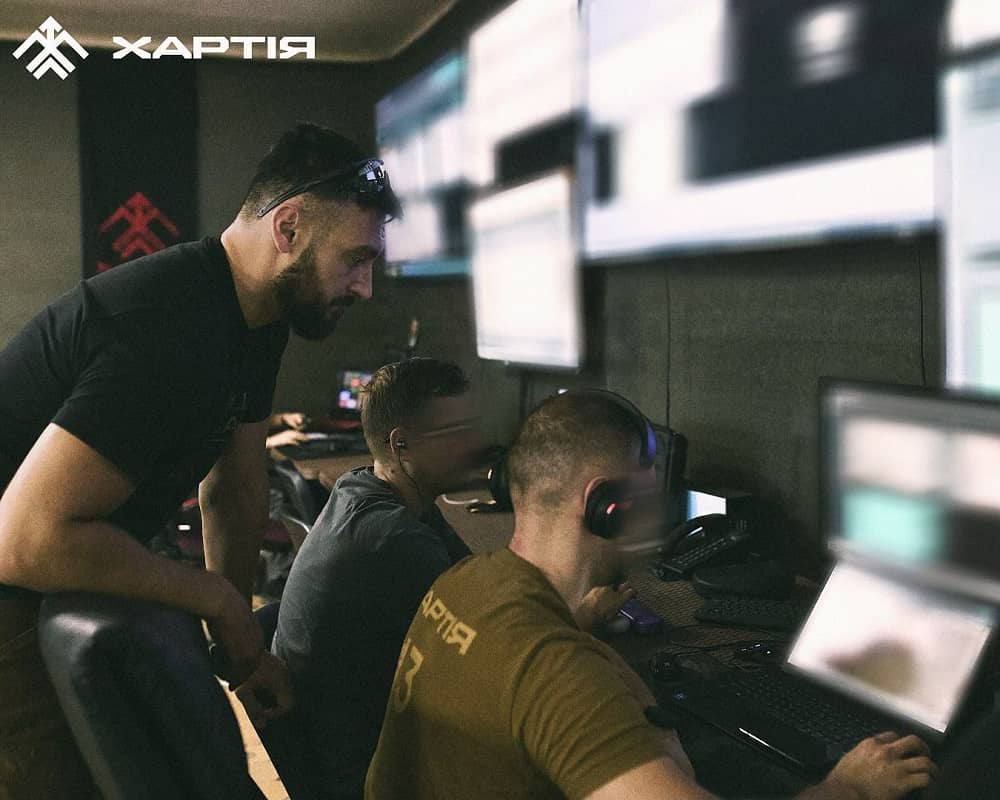 ISTAR control roomPhoto: Khartiia Brigade
ISTAR control roomPhoto: Khartiia Brigade
Each operator monitors multiple screens that display drone feeds simultaneously. If Russian troops gather under the camera and present a viable target, the operator knows exactly what to do.
They maintain constant contact with FPV drone pilots or artillery units, who can strike within minutes. If there is no opportunity or order to attack, the operator simply logs the data into Delta and continues monitoring the screens. A battle captain is on duty behind the operators in the room.
This experienced officer manages the battle and, according to the rules, is responsible for making decisions to strike when operators spot Russian forces on camera. However, seasoned operators often know precisely whom to contact within their area of responsibility and sometimes act at their own discretion to expedite actions.
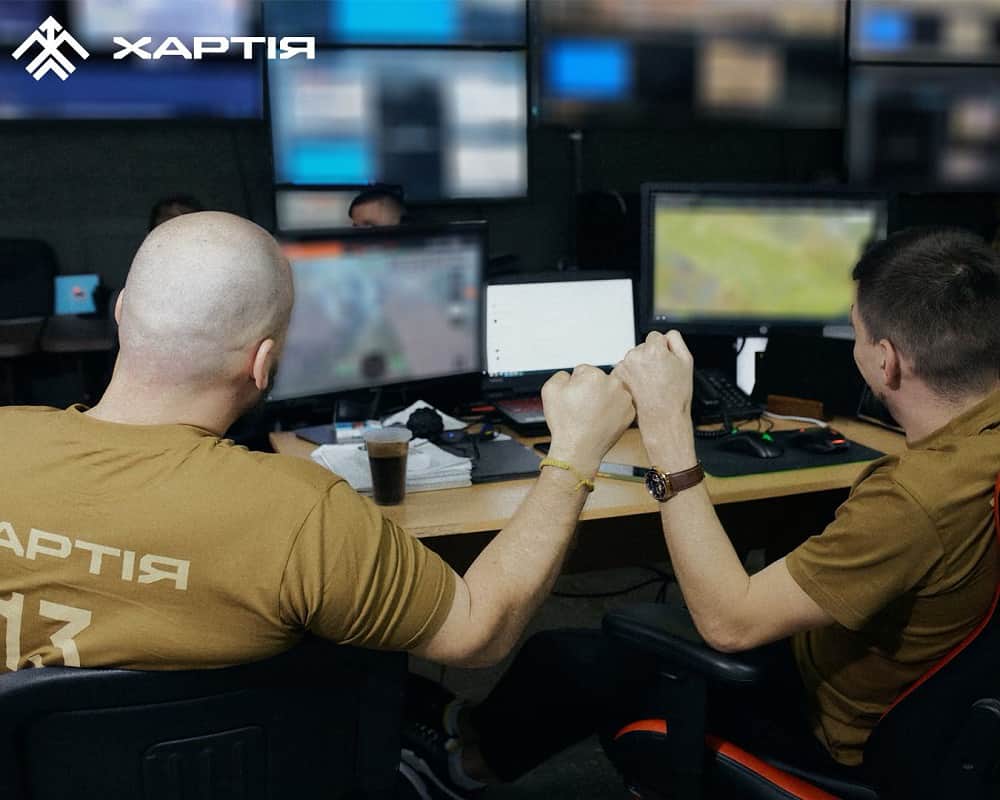 A battle captain and his assistant in the ISTAR control roomPhoto: Khartiia Brigade
A battle captain and his assistant in the ISTAR control roomPhoto: Khartiia Brigade
An ISTAR operator can also take proactive measures, such as directing a reconnaissance drone operator to gather additional intelligence or assisting in planning local operations. Ekonomichna Pravda spoke with Dmytro, an ISTAR operator from the Khartiia Brigade, who shared examples from real-life combat situations.
First, an FPV drone was launched on a mission but lost its target. Meanwhile, an ISTAR operator spotted a Russian motorcycle with a sidecar in a nearby area. The operator calculated its movement direction and quickly relayed the data to the drone pilot.
As a result, the pilot adjusted the route and successfully struck the motorcycle. In the second case, an ISTAR operator spotted Russian soldiers hiding in the basement of a house behind a closed wooden door. The operator swiftly directed two FPV drones: the first drone destroyed the door, and the second flew inside to target the soldiers.
On the third occasion, a Russian FPV drone approached a Ukrainian position, prompting a response from Ukrainian electronic warfare to bring it down. An ISTAR operator then halted the planned launch of Ukrainian drones in the area to avoid jamming them with the same electronic countermeasures. Operators are a crucial part of the ISTAR process at the Khartiia Brigade.
The brigade is currently expanding its system and is actively seeking individuals to fill these positions.
Not everyone uses it
"All these hundreds of people processing vast amounts of information appeared only in 2022. None of this existed before the full-scale war. No one cared that battalions were operating with maps that were at least 72 hours out of date.
To gather information about the situation on the ground, the brigade's intelligence officers had to travel 200 km to attend group meetings and redraw the maps. Afterwards, they'd return to headquarters, receive reports from battalion reconnaissance, and redraw those as well. This was the routine until 24 February 2022 [the start of the full-scale Russian invasion]," Honchar said.
He noted that things are gradually improving now. Many brigades within the Ukrainian defence forces are making progress in implementing the ISTAR system.
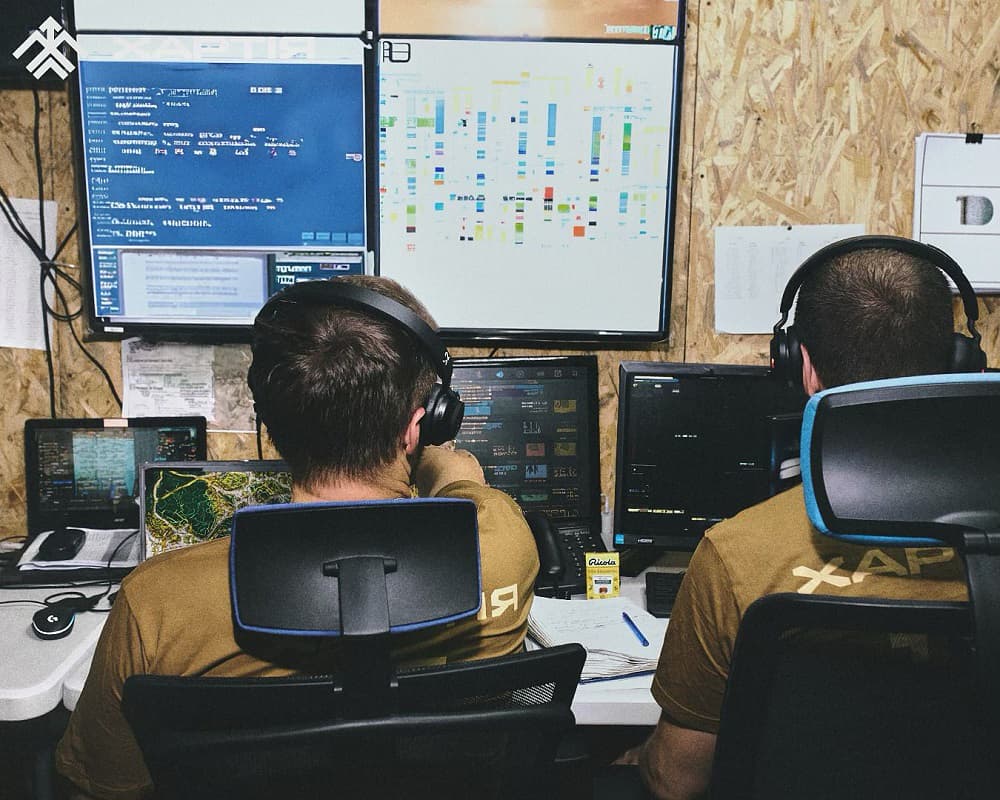 ISTAR analystsPhoto: Khartiia Brigade
ISTAR analystsPhoto: Khartiia Brigade
"Sometimes officers from a neighbouring unit arrive at the headquarters of a more advanced brigade with a paper map and outdated management approaches. They are then told that this is not the way to go and are taught how to use Delta and other tools to gather intelligence.
After that, these commanders often become 'ISTAR witnesses' or at least adopt some of the processes for themselves," said Tsirkun.
Ukraine even has a department that deals with implementing ISTAR at all management levels. It is a separate military unit.
However, the implementation of ISTAR standards is progressing slower than it could, particularly as the Ukrainian military faces setbacks under the pressure of larger Russian forces. According to Tsirkun, three key factors are hindering the process.
The first factor is outdated legislation. Ukrainian documents almost entirely fail to regulate the use of modern situational awareness systems and do not specify the data exchange processes within these systems.
Commanders may fear making mistakes or acting outside the regulations and then being held accountable.
The second is human error. Few commanders understand the principle of mission command, which stipulates that each unit is intelligent and can make decisions independently within its area of responsibility.
Therefore, they are reluctant to change their approaches to information management and continue to fight using old and ineffective methods. The third is training. Educational programmes at officer training institutions are evolving, but they still have work to do to meet NATO standards in inter-unit interaction and modern battlefield challenges.
"Those commanders who find the right people to develop the system, give them some freedom of action and have the ability to provide these people with a workplace with advanced computers, communications, headsets and additional screens, and they will be able to adopt ISTAR principles. Canada's Roshel company to produce armoured vehicles in Ukraine "The average time for setting up ISTAR processes in the brigade and its battalions is a month and a half, but it will depend on the extent to which the commanders accept this process and want to make changes," Tsirkun said.
She noted that some units are building ISTAR systems organically, tailoring them to their specific needs, even without relying on Western methodologies. However, other units are still struggling in this area and have yet to establish these processes effectively. The sooner the Ukrainian military approaches NATO standards, the less the Ukrainian defence forces will resemble a "small Soviet army" that will inevitably lose to a "big" one due to limited resources.
Ineffective unit management leads to the deaths of Ukrainian defenders, so a technological system for interaction should be built as soon as possible. Moreover, Ukraine has the qualified people and the technology to accomplish this goal. Translation: Artem Yakymyshyn
Editing: Monica Sandor